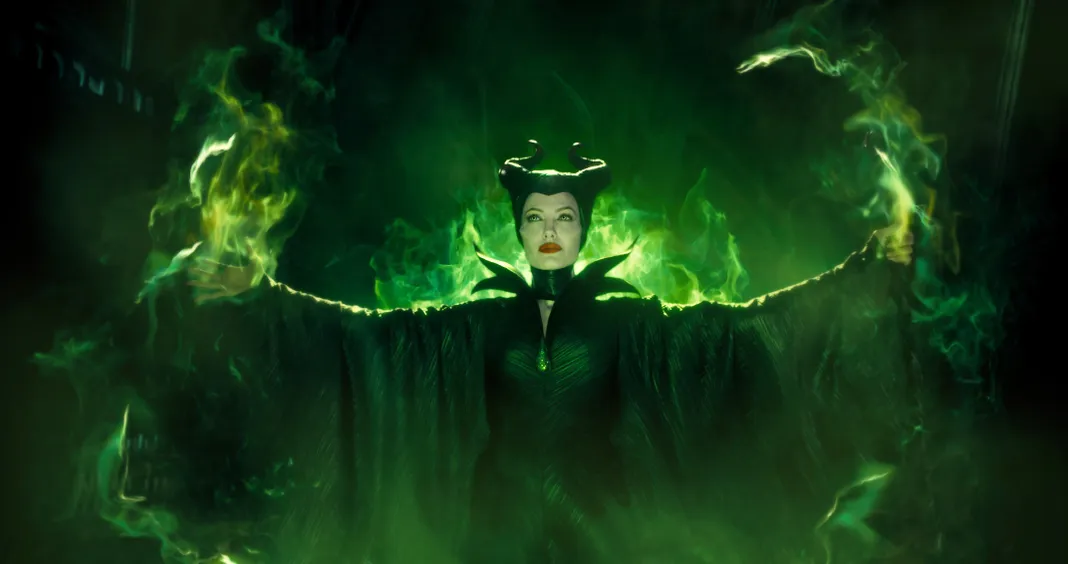
As I watched Maleficent toggle between magic woodlands filled with trembling mushroom people and grim battle scenes steeped in markedly misanthropic revenge tales, I had to ask myself the question: who is this movie for? Too shallow for adults, too dark and dull for kids, yet still too cutesy for teens… I left the theater certain that Angelina Jolie’s perplexing Disney twist wasn’t for anyone, but in assessing the aforementioned elements as pieces of a puzzle rather than conflicting forces, I’ve come to realize just the opposite: Maleficent is for all people, because Maleficent is about all people. To be more precise, the film’s structure is modeled after the lifespan of a human being.
Like all people, Maleficent starts out simple, unbearably bright, and cloyingly enchanted with everything around it — as a lass, fairy princess Maleficent (played by a preteen Isobelle Molloy) scrambles through her fairy-laden home, giggling like a Care Bear with the variety of natural abominations she calls friends (elephant-frogs, tree-skeletons, troll-rabbits). It’s sweet enough to invite anaphylaxis.

It then grows into its teen years: brooding and self-serious — an older Maleficent (now Ella Purnell) falls horns-over-wingtips for some dope named Stefan, who vows his true love to her but is totes just being a selfish d-bag — followed by the violent hostility of its young adulthood — Stefon (Sharlto Copley, affecting a bad guy in an Animaniacs period sketch) betrays Maleficent (finally Jolie, who cuts through the thick, musty sheaths of aimless convolution with her incredible screen charisma… or maybe just those diabolical cheekbones) by stealing her wings, earning his place as king and setting her off on a course of bitter revenge.
For a long while thereafter, Maleficent settles into adulthood: cynical, mechanical, apparently bored with its life altogether (this after Maleficent dooms King Stefon’s baby daughter Aurora to the curse of eventual eternal sleep) … that is, until a change in direction affords it a short-lived whimsy that perks up the energy just enough to keep it (and us) trucking to the end. If we can work our way past Imelda Staunton, Leslie Manville, and Juno Temple as the insufferable and incompetent fairies charged with caring over young Aurora (Elle Fanning, but without the usual moxy).
Of course, before it gets there, it endures the ever faithful mid-life crisis, ushers in a resurgence of misguided passion that never had much place in the formula to begin with and certainly doesn’t seem at all at home this time around — this is an era of ghost-fish, dragon-fights, and plot contrivances out the wazoo. But finally, the film settles on the tranquility of willful disregard, knowing that there’s nothing it can now do about its lifetime of shortcomings, happily committing to memories of the things it loved most: reptile-pachyderm hybrids, diabolical cheekbones, and the narration of Janet McTeer. Like any human, Maleficent leaves the world with more questions than answers, and ones we’re all better off relegating to a few short words upon its passing and then forgetting altogether.
And, much like all people, it’s not very good. Fine. Not altogether bad. But mostly just brazenly unimportant.
2.5/5


